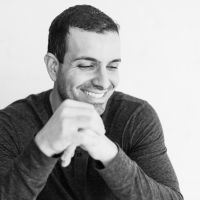
The following is an excerpt from the SLR Lounge Photography 101 DVD, the best way to learn photography. In this 7 hour, comprehensive workshop, we teach you how to create professional images with entry level cameras, lenses, and lighting gear. We cover portrait photography, landscape photography, food photography, fashion photography and more! Check in out here, or watch the trailer at the end of this tutorial.
The Exposure Triangle

We’re bringing you back to the basics with the Exposure Triangle, which consists of shutter speed, aperture, and ISO. Understanding the 3 components of the Exposure Triangle and how they work together will give you a mastery of technical and artistic control over your image. Check out the video below to see our real world analogy of the Exposure Triangle and the concept of equivalent exposure.
Watch The 3 Tips to Master Exposure Technically and Creatively Video
Click to Subscribe!
1. Shutter Speed
Shutter speed changes the exposure by controlling the duration of light reaching the sensor. You can tell the camera how much light you want by controlling the shutter, slower shutter = more light, faster shutter = less light. Shutter speed is measured in seconds or fractions of seconds such as 1/500th, 1/200th, 1/30th. Note that 1/500th is faster than 1/30th, therefore 1/500th allows less light to reach the sensor.

The artistic component of shutter speed is deciding whether you want freeze or show motion. For example, to capture a sharp image of a moving subject, you would want to increase shutter speed to freeze motion. On the flip side, slowing down the shutter speed will show movement in your image, as seen in the image above.
2. Aperture
Aperture is the pupil of the lens and it controls the amount of light that reaches the sensor. Every stop down reduces the amount of light coming in even though the F number increases. For example, f/2.8 allows more light in than f/4 even though f/2.8 is a lower number. This is because aperture is a fractional measurement, so an aperture of f/2.8 is actually 1/2.8, and f/4 is actually 1/4.

Aperture also controls the depth of field. Wider open (lower number) apertures have a more shallow depth of field, which means more bokeh (out of focus areas) in the background. Closed down (higher number) apertures have a deeper depth of field, as seen in the branches and leaves in the image above.
3. ISO
ISO is the measurement representing sensitivity to light. The higher the ISO the more sensitive the sensor is to light, therefore it requires less light to achieve a desired exposure. For example, adjusting the ISO to 100 will require twice the amount of light than at ISO 200 because ISO 200 is two times more sensitive than ISO 100. We demonstrate this using measuring cups and water in the video above.

In the artistic sense, every step up in ISO reduces overall image quality, dynamic range, color and introduces more grain. It is best to maximize the quality of an image by shooting in low ISO settings.
Conclusion
Understanding these 3 components of the Exposure Triangle is the first step to developing a photographic style. When you master the technical aspects of exposure, then you can move on to the artistic aspects of photography. If you’re interested in learning more about photography then be sure to check out Photography 101, the best way to learn photography!
Click to Subscribe!





Get Connected!